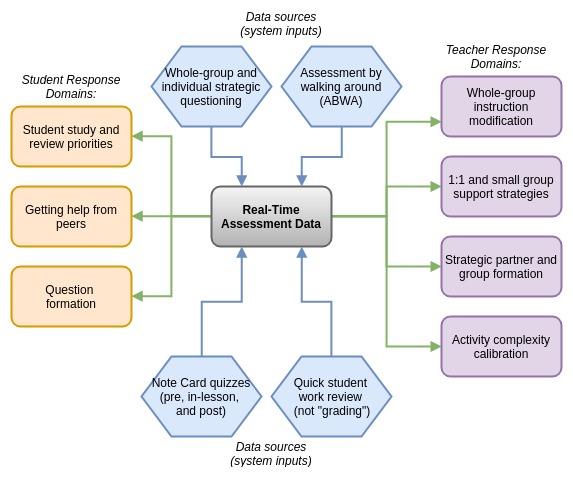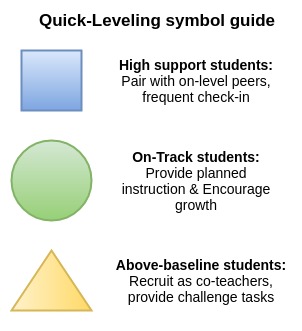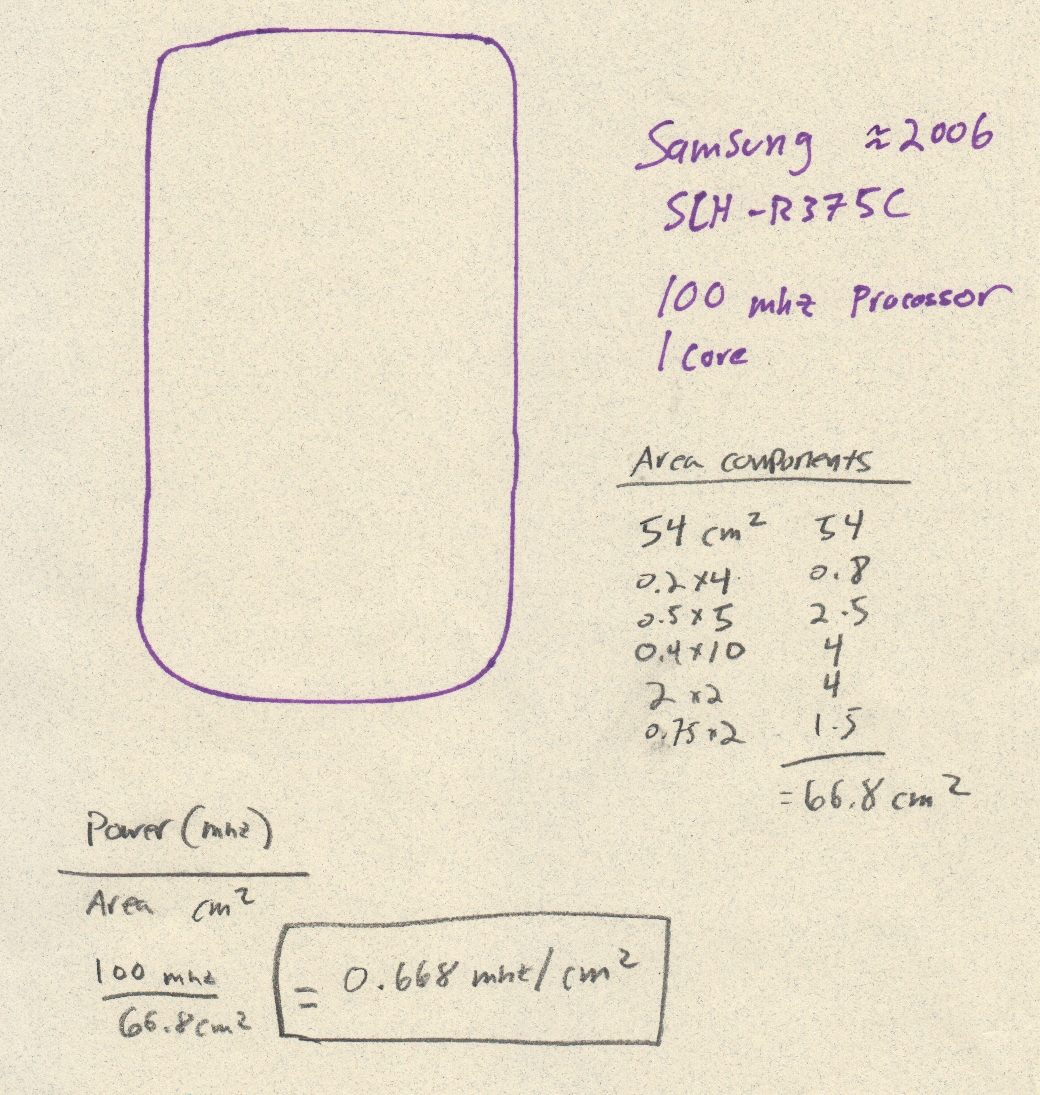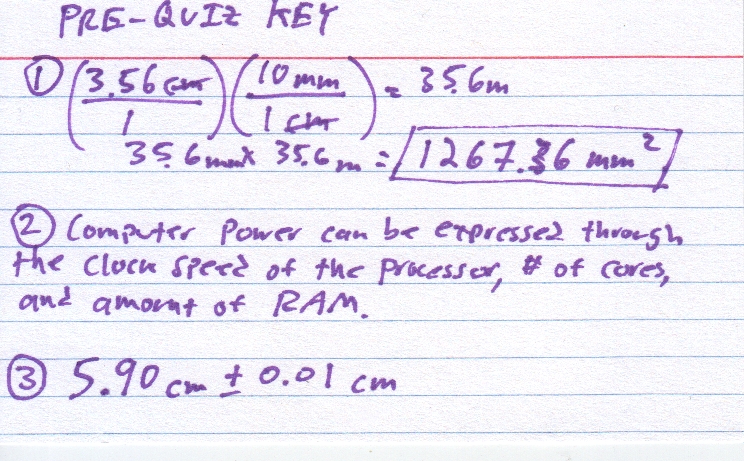
Implementing Real-Time Assessments
Strategies for gathering and responding to assessment data on the lesson level
Assessment data is reveals dimensions of student learning and can be useful for both students and teachers. This workshop focuses on how to gather and respond to student assessment data flowing to teachers over the course of a single lesson.
Jump to a section
check_boxLearning Objectives
extensionCore Concepts
bookResources and reference documents
motorcycleExercise 1: Model mini-lesson using real-time assessment data
motorcycleExercise 2: Debrief and analysis of sample lesson
motorcycleExercise 3: Participant real-time assessment planning and sharing
Learning Objectives
| check_box | Describe and discuss an example of real-time, lesson-level assessments |
|---|---|
| check_box | Create a model of real-time assessment data relevant to one's own discipline and core coursework |
| check_box | Create a draft plan for implementing real-time assessment during an upcoming lesson which includes both assessment instruments and response strategies |
book
External Resources
CCAC assessment portal containing links to documentation of a variety of assessment strategies, ideas, and examples.
Developing classroom assessment system documentation describing in detail how various forms of assessment (informal, formative, and summative) can be structured to provide a holistic picture of student learning.
extension
Module Core Concepts
Definitions
- Assessments: Tools for gathering information about student the student learning process and teacher lesson effectiveness.
- Real-time assessment: Tools and strategies for gathering data about student learning during a single lesson and responding to that data during that same lesson or at the beginning of the very next class session.
- Assessment response strategy: A plan created by a teacher for making decisions about the flow and structure of a lesson based on assessment data.
Real-time assessment model
The following diagram captures sources of real-time assessment data and areas in which that data can flow and impact the way a lesson unfolds based on implementation of an assessment strategy.

Core Concepts
- Most stress is not conducive to meaningful learning. If we want to assess this genuine skill development, our assessment data best not increase any existing stress. Therefore: Assessment of learning is best implemented when mostly decoupled from the stress of running point totals used in determining course letter grades.
- Assessment data is most meaningful when the feedback comes as close to the actual practice process as possible. (Anecdote: When learning an instrument with a teacher, knowing that I missed an A-flat in a scale 45-minutes ago--or, worse, yesterday--isn't very helpful.) This means we need mini-assessment strategies so feedback can come fast.
- Learning involves lots of practice, and meaningful assessments provide data to both the students about their own learning progress and data to the instructors as they plan and implement lessons.
Principles of Real-Time assessment
To close the gap between administering an assessment instrument and students/teachers responses to that data, our assessment systems need to be streamlined, fast, and un-intimidating. Real-time assessments can be designed to implement these characteristics to the benefit of students and teachers.
The following principles can guide real-time assessment tool development:
- Employ the least-invasive and least record-intensive strategies first (e.g. assessment by walking around, student work review, etc.). "Pick the low-hanging fruit before climbing the tree."
- Whatever tools once chooses to use, they should be small, un-intimidating, and not framed as a ranking exercise. If somebody is placed on "top" then, necessarily, somebody is "below" them, creating unnecessary barriers to genuine collaboration.
- Map real-time assessment tools to lesson objectives so data and responses are coordinated around pre-determined learning outcomes.
- Plan real-time assessment questions so they are scaffolded and demand a range of intellectual rigor (i.e. Scaled up Blooms hierarchy).
- Transfer as much of the assessment process to the learners themselves, empowering them to use that data for themselves, removing the teacher as an intermediary between students and their learning process.
motorcycle
Skills baselines: 3x5 card assessment
Exercise type: Mini-quiz
Obtain a 3x5 card, write your name ON THE BACK, and complete these questions to the best of your ability on the lined side. Show as much work as you can, please.
Baseline quiz
- Calculate the area of a square with edges 3.56 cm long in to mm2
- Describe in 1-2 sentences how one can convey information about the speed ("power") of a computer of any kind (i.e. desktop, handheld, etc.)
- Review the following image: Compute the length of this USB memory stick to a proper degree of significant figures and state the error of the measurement
Peer check your quiz
Swap cards with your neighbor, review the answers given against the key below, and provide whatever feedback you can on where any errors were made or successes demonstrated.
Create class-wide instant leveling
The workshop facilitator will collect the cards and do a quick sort of each of the cards into one of three leveled categories: needing high-support, baseline proficient, and baseline advanced.

motorcycle
Exercise 1: Model mini-lesson using real-time assessment data and response strategies
Exercise type: Lesson Modeling
To provide some discussion content and strategy ideas, undertake the following exercise to calculate a rough measure of computer processing power based on device size. Use these steps to guide your work. You are welcome to work with peers as needed.
- Acquire a computing device, a sheet of paper, and an area measuring grid.
- Place your computer on the paper and trace its outline.
- Use the area measuring grid to calculate the area in square centimeters of the device's footprint. Write this area under the outline.
- use a non-archiving search engine such as duckduckgo.com to search for a measurement of your device's processor clock speed in megahertz. If you have a processor with multiple cores, multiple the clock speed by the number of cores.
- Compute a ratio of the computer's processing power to its area. Example: (100 mhz /
- Look up the year this computing device was manufactured. Using the power/area ratio and the year, mark your data point on the class graph on the board.
- Help a peer who is not yet done or is confused.
- Study Moore's law using a resource of your choice

motorcycle
Exercise 2: Debrief and analsis of sample lesson
Exercise type: Group discussion
Questions for group discussion:
- What real-time assessment strategies did you witness? What data was gathered through these methods?
- How was assessment data used by the instructor to adjust the execution of the lesson?
- What planning was needed to implement each of the observed real-time strategies? Which seem the most onerous? The least work? Is the amount of work required to implement a strategy proportional to the value of the data produced?
- What about the method of execution could be improved?
- How could one or more of these methods be implemented in your own classes?
motorcycle
Exercise 3: Participant real-time assessment planning and sharing
Exercise type: Peer co-planning
Use the following guide to create a lesson-level, real-time assessment plan. These documents will be shared on this workshop's online guide and with other peers at CCAC.
Real-time assessment plan: [Course name, lesson name, your name]
Lesson objectives (include knowledge and skills)
[Skill-based objectives]
[Knowledge-based objectives]
Lesson-in-a-sentence
Summarize the lesson you plan to teach in a sentence: what will students do to learn the material?
Assessment needs narrative:
Describe in a few sentences the general reason for implementing real-time assessments in this lesson and the kind of data the strategies you outline will yield.
Assessment tools and response plan
| Real-time tool | Implementation details | Response plan |
|---|---|---|
| List each tool from the flow chart above you plan to implement in this lesson | Describe when and how you expect to use this tool in the lesson | What changes will you make during instruction based on the assessment data? |
motorcycle
Quick Feedback: Session evaluation
Exercise type: Evaluation
Help improve future workshops by answering the following questions on a 3x5 card
Real-time assessment session evaluation
- What components of this workshop were most useful to your practice and why?
- How could this session be made more valuable to other teachers?
